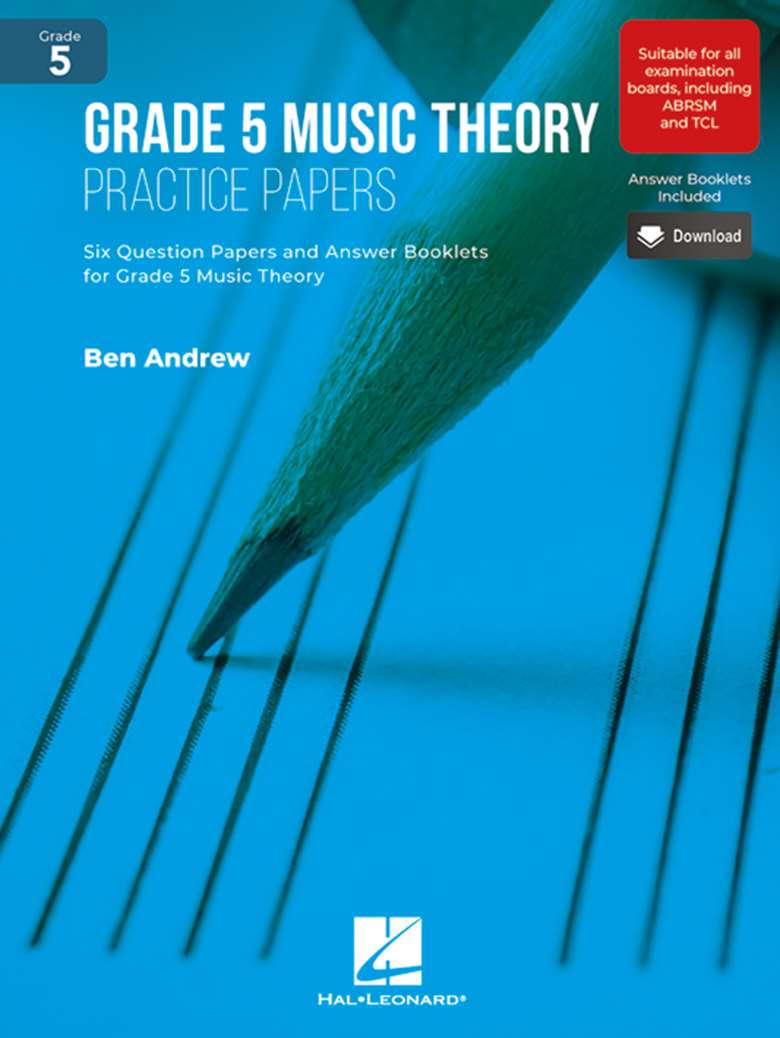Reviews: Grade 5 Music Theory Practice Papers
Clive Osgood
Saturday, May 1, 2021
Clive Osgood reviews Grade 5 Music Theory Practice Papers: Six question papers and answer booklets for Grade 5 Music Theory by Ben Andrew, published by Hal Leonard Europe.

In the introduction to his book of Grade 5 Music Theory practice papers, Ben Andrew states the importance of understanding the different building blocks of music and how they ‘blend to form a musical creation’. A very good way to develop an understanding of music theory is by working through a variety of different questions. This new Hal Leonard book is designed to provide a wide range of questions to help students prepare for Grade 5 Music Theory with all the major examination boards, although it would also be a very useful resource for both GCSE students and those preparing for A Level.
In particular, it follows the general format of multiple-choice questions found in the revised online exams from ABRSM, as well as the established paper-based Trinity College London (TCL) exams. With only a limited selection of papers available from the new ABRSM exams, any additional resources by which to assess comprehension of learning at this level are particularly welcome.
The book, priced at £6.99, includes six practice papers, each containing approximately 40 questions. This is fairly good value for money at a little over a pound per paper. Each paper is divided into six different sections focusing on a specific musical element, such as ‘Rhythm and Pitch’ and ‘Key and Scales’. This follows the pattern of the exams, as does the last section, ‘Music theory in action’, which provides a variety of analytical questions on a wide range of pieces from Bach to Scott Joplin. The book also contains a link to a downloadable answer booklet which is very easy to access and is included in the price of the book.
Within each of the papers there is an impressive selection of questions that have been well thought through, covering the wide-ranging content within syllabuses of different exam bodies. Although broadly similar, different exam boards often present different styles of questions.
Here there appears to be a little more emphasis on the ABRSM syllabus rather than those of other boards like TCL, which includes a number of creative-type questions – such as setting of words to a rhythm and adding a tune to a bass line – that are only given minimal coverage within the book. Having said that, other questions found in only the TCL syllabus, for example, such as writing chords for SATB, are also well covered and the general range of questions is comprehensive.
It will certainly be useful for students to be questioned in a variety of ways so that they can prepare for any of the main examination boards. This book is a welcome resource for both music students and their teachers.

